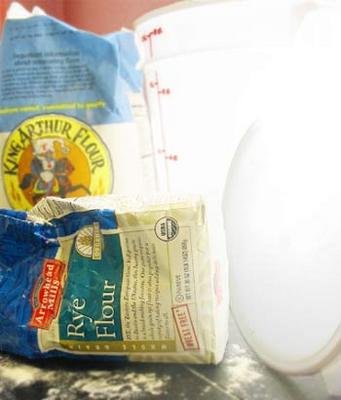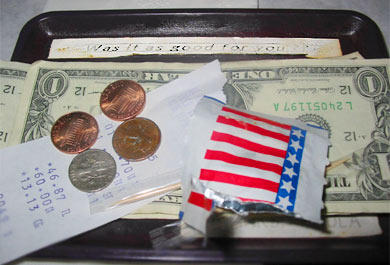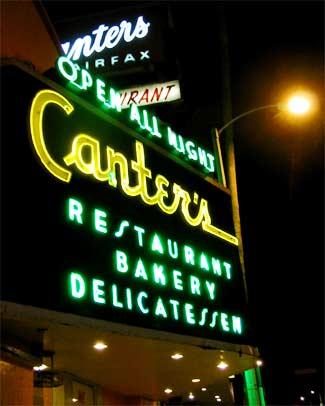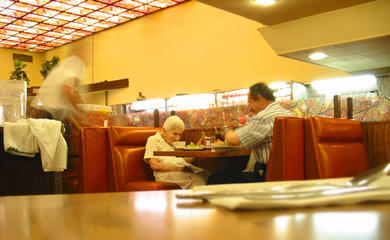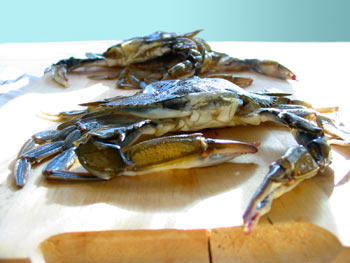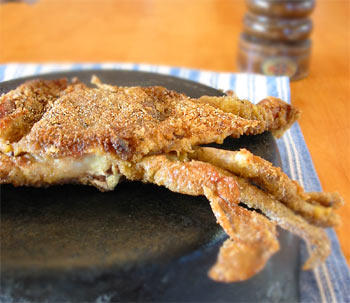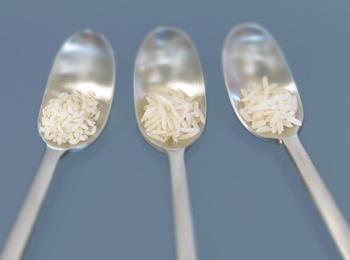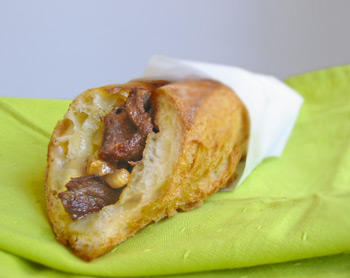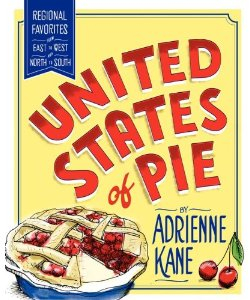 No trip to Los Angeles would be complete without a celebrity sighting. And this year’s trip to LA was no different when I saw the perfect “C” level star, Camryn Manheim, strolling down the canals at Venice with her annoyingly precocious son in tow. Ah, I loves me some LA! Last year I had not one, but two celebrity sightings– be still my beating heart. Elijah Wood (a bona fide “B” level celebrity) having a late night nosh at Canter’s deli, and the piece de resistance, not George Clooney, nor Sharon Stone (both “A” levels), but the Oscar Mayer wienie mobile cruising down the 101 freeway, heading towards the Valley. My stomach is a-flutter simply recalling the one-ton giant, lumbering down the freeway, coughing plumes of exhaust, and distributing 100%, all-beef hot dogs to throngs of clamoring kiddies.
No trip to Los Angeles would be complete without a celebrity sighting. And this year’s trip to LA was no different when I saw the perfect “C” level star, Camryn Manheim, strolling down the canals at Venice with her annoyingly precocious son in tow. Ah, I loves me some LA! Last year I had not one, but two celebrity sightings– be still my beating heart. Elijah Wood (a bona fide “B” level celebrity) having a late night nosh at Canter’s deli, and the piece de resistance, not George Clooney, nor Sharon Stone (both “A” levels), but the Oscar Mayer wienie mobile cruising down the 101 freeway, heading towards the Valley. My stomach is a-flutter simply recalling the one-ton giant, lumbering down the freeway, coughing plumes of exhaust, and distributing 100%, all-beef hot dogs to throngs of clamoring kiddies.
This year, I wanted to make the trip to LA as special as the last, so Brian and I whipped out our copy of Los Angeles: An Architectural Guide by David Gebhard and Robert Winter in hot pursuit of programmatic architecture. Programmatic architecture, also known as: mimetic, googie, “a duck,” means a building shaped like what it is selling. This style of architecture is found all over this country, and was especially popular during the 1930′s to the 1960′s. Out of the many places in the USA that contain some programmatic relic from the past, Los Angeles is the mecca of this type of architecture.

The Tail-O-the-Pup, now located on N. San Vicente Boulevard, near the Beverly Center, was moved from it’s original 1946 location, on the corner of La Cienga and Beverly Boulevard– anything to preserve a little bit of true Americana. Forget about the Liberty Bell, the Empire State Building, we want our larger than life, wienies on a bun. Tail-O-the-Pup serves your average hot dog, boiled (or grilled for 50 cents extra), plus all of the fixings: chili, cheese, guacamole. Truth be told, it’s just an ordinary hot dog served from an extraordinary hot dog shaped building.
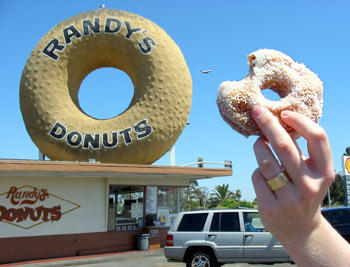 From the 405 freeway it beckons to you like a beacon of grease and good-eatin’, the enormous donut (it looks like the plain cake variety to me) that is Randy’s Donuts. The ginormous donut is just a sign, but what a sign it is. Talk about making a building work for you! The vertical steel supports of the model, plunge right through the tiny, non-descript donut shop. And the donuts aren’t half bad either. The coconut donut (pictured above) was a delight, a raised glaze donut, rolled in sweetened, snowy white flakes of coconut. Mmmm. A charm from 1954, this is the last Randy’s Donuts around, they used to be dotted throughout Los Angeles and the San Fernando Valley.
From the 405 freeway it beckons to you like a beacon of grease and good-eatin’, the enormous donut (it looks like the plain cake variety to me) that is Randy’s Donuts. The ginormous donut is just a sign, but what a sign it is. Talk about making a building work for you! The vertical steel supports of the model, plunge right through the tiny, non-descript donut shop. And the donuts aren’t half bad either. The coconut donut (pictured above) was a delight, a raised glaze donut, rolled in sweetened, snowy white flakes of coconut. Mmmm. A charm from 1954, this is the last Randy’s Donuts around, they used to be dotted throughout Los Angeles and the San Fernando Valley.
I think programmatic architecture is the way to go. It just makes everything so much simpler. For instance, who wouldn’t want to buy their groceries from a building shaped like a giant grocery bag, or better yet a cart? Picture it now: driving home and pulling up to your shiny new, car-shaped garage, taking your house keys out and unlocking the door to your sofa-shaped home, no confusion about what is what. Programmatic architecture is the wave of future, at least it was 50 years ago.
 Two days have passed, and the feeding has begun. Like a boa constrictor consumes it daily diet of rodents, and small jungle creatures, so too has my rye flour engulfed the 2/3 cup of bread flour it was fed last night. The rye flour was puffy and swollen looking upon its consumption, so there was definitely some fermentation going on. I added the bread flour, stirred to mix, now I wait another two days before feeding number two.
Two days have passed, and the feeding has begun. Like a boa constrictor consumes it daily diet of rodents, and small jungle creatures, so too has my rye flour engulfed the 2/3 cup of bread flour it was fed last night. The rye flour was puffy and swollen looking upon its consumption, so there was definitely some fermentation going on. I added the bread flour, stirred to mix, now I wait another two days before feeding number two.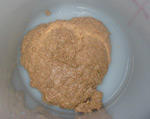 When I stirred the mixture it was very thick. The consistency was definitely more than, “a thick pancake batter,” as the recipe said it would be. I would equate it to a lumpy, dense scone batter, but pancake batter is sort of subjective, right? It alarmed me enough so that I asked Brian, “And just what do I do if this doesn’t work out, and here I am documenting it online, for all the world to see my embarrassment.” His remark, “If it doesn’t work out, it doesn’t work out, and you’ll try another recipe.” So, with much trepidation, I give you Goo Day 3.
When I stirred the mixture it was very thick. The consistency was definitely more than, “a thick pancake batter,” as the recipe said it would be. I would equate it to a lumpy, dense scone batter, but pancake batter is sort of subjective, right? It alarmed me enough so that I asked Brian, “And just what do I do if this doesn’t work out, and here I am documenting it online, for all the world to see my embarrassment.” His remark, “If it doesn’t work out, it doesn’t work out, and you’ll try another recipe.” So, with much trepidation, I give you Goo Day 3.


 I admit it, maybe it has something to do with the fact I am a Bay Area native, and here sourdough is like pablum, but I love sourdough bread. The tang, the crumb, the subtle puckery nature, it makes my heart go pitter pat. To me, even a bad loaf of Colombo Sliced Sourdough makes pretty good toast slathered with butter, and the end piece of a sourdough baguette, still slightly warm, crust shiny and bubbled from The Cheese Board, is sublime.
I admit it, maybe it has something to do with the fact I am a Bay Area native, and here sourdough is like pablum, but I love sourdough bread. The tang, the crumb, the subtle puckery nature, it makes my heart go pitter pat. To me, even a bad loaf of Colombo Sliced Sourdough makes pretty good toast slathered with butter, and the end piece of a sourdough baguette, still slightly warm, crust shiny and bubbled from The Cheese Board, is sublime.